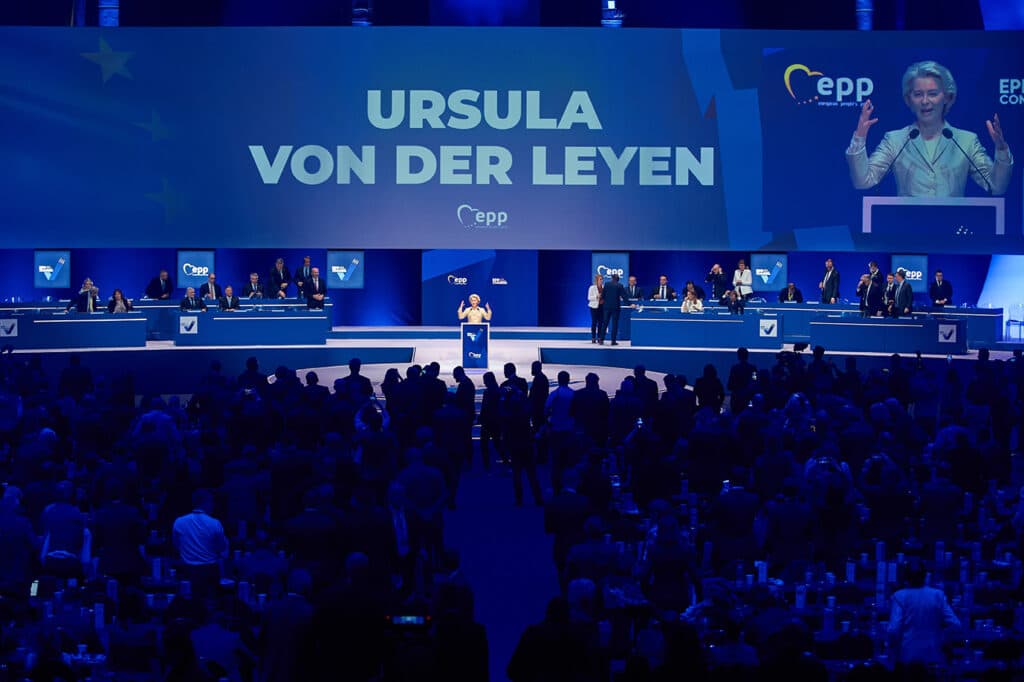1 The past: geographical rationing
Since its origins, the electricity industry has been built on the notion of “demand to serve”. In a given region, demand varies over the course of a year according to the time-periods (consumption is higher during daytime than nighttime, during weekdays than weekends, during winter than summer), to weather conditions and to various events (demand increases if the temperature drops during the winter, or if France is playing the world cup final during the summer). Economists call these different conditions “states of the world”.
Electricity cannot be stored: electricity consumed in one state of the world must be produced in the same state of the world. As it is impossible to build an electric system that would meet demand in every possible state of the world, standards for reliability are established and the size of the power generation system is determined to meet these standards. For example, the French power generation system is designed for 99.97% reliability: production (net of forced outages on generation assets) is higher than demand in 99.97% of the states of the world[1].
What happens during the remaining 0.03% states of the world, for example, if a winter is extremely cold and several power plants face production problems? The network operator then has to implement rotating blackouts: he cuts a part of the network for an hour or two, and then cuts another one, in order to avoid a complete system failure. This situation is not theoretical. Rotating blackout might occur in Belgium during winter 2014/2015 and in the UK during winter 2015/2016.
This geographical rationing is economically inefficient. Different consumers place different values on electricity. It is then more efficient that consumers with low valuation for electricity (for instance, they can use gas for cooking) reduce their consumption while their neighbors who are willing to pay more (because they have only electricity for cooking) keep consuming.
A simple example illustrates the inefficiency of geographical rationing. The airlines industry shares many features with the electricity industry: demand varies across states of the world, and a plane journey is not storable. If at the end of a Friday afternoon, demand between Toulouse and Paris was higher than the number of available seats, geographical rationing would dictate that Haute Garonne customers cannot travel between 5 pm and 6 pm and Tarn customers cannot travel between 6 pm and 7 pm. This is obviously inefficient. Some Tarn customers would prefer to travel between 5 pm and 6 pm while some Toulouse customers would rather travel between 6 pm and 7pm. Therefore, they should be allowed to trade. In practice, ticket prices increase for the two bands of the evening peak (from 5 pm to 6 pm and from 6 pm to 7 pm) up to the point where demand for each band adjusts itself to the available supply.
Policy makers’ preference for quantity rationing rather than adjustment through price has several explanations. One of them is expressed in terms of equality. Price allocation, which is source of efficiency, has a bad reputation (in particular in France) because it seems to be in direct contradiction with the equality principle to which our fellow citizens are committed. Allocating a good through prices means (sometimes but not always) that the richest members of the community have priority access. For that reason, quantity rationing is preferred, in particular for public service, as it gives us the feeling of being equals when facing rationing. Of course, this is an illusion. In the case of a very cold winter, who could seriously believe that a wealthy suburb of Paris might be shut down before a poor one? In the absence of prices, rationing is organized using other criteria: political connections and weight, friends and family networks, etc. An important advantage of price allocation is that it is transparent.
2 The future: price allocation
A second argument against price allocation is that it is not feasible. This no longer holds because the emergence of wholesale markets and advanced information technologies over the last ten years has made price allocation during peaks technically possible.
Therefore, one of the biggest issues faced by the authorities is to design institutional and contractual conditions that would make demand sensitive to prices. It is even more important that the rise of intermittent energy producers (mainly solar panels and wind turbines) makes production more volatile, which increases the value of demand response.
The simplest approach is to align, at the margin, prices paid by final customers with spot electricity prices. For example, a consumer negotiates with his supplier a contractual price and an hourly consumption profile, and all deviations are settled at the electricity spot price: if he reduces his demand compared to his hourly profile, he will receive this spot price on the difference between the subscribed energy and the effective energy consumed, if he consumes more than his hourly profile, he will pay the difference at the spot price.
This scheme sends virtuous consumption signals: the consumer transfers his demand from periods when the spot price is higher than the supply price to the periods where the spot price is lower than the supply price. However, policy makers and some consumer associations are against this approach, arguing that it exposes consumers to the risk of a surge in spot prices. They prefer demand response, another approach that allows consumers to benefit from the surging prices, as explained next.
Demand response enables consumers to resell on the spot market a portion of the electricity purchased from their supplier. Consider a consumer that bought 100 Megawatt-hours at a given contract price, for example 50 € per Megawatt-hour. When the spot market price is higher than the contract one, for example 200 € per Megawatt-hour, the consumer may decide to resell the units he values less than the spot market price. In this case, he will resell all units he values less than 200 € per Megawatt-hour, and receive the spot market price (200 € per Megawatt-hour) for these units. If for he ends up reselling 20 Megawatt-hours, he purchases 100 Megawatt-hour from his supplier (at 50 € per Megawatt-hour), consumes 80 Megawatt-hours and receives the market price (200 € per Megawatt-hour) for 20 Megawatt-hours.
Demand response sends virtuous consumption signals during peaks. However, as discussed below, implementation has to overcome three difficulties (i) confusion between electricity purchased and electricity delivered, (ii) profitability of demand response operators and (iii) information asymmetry and strategic behaviors of consumers.
3 Confusion between electricity purchased and electricity delivered
In the precedent example, the supplier delivers only 80 Megawatt-hours to the consumer. The later however has to purchase the 80 Megawatt-hours delivered plus the 20 Megawatt-hours that are resold-but-non-delivered. In some instances, contracts between suppliers and customers state that the customer pays only for the Megawatt-hours actually delivered. In these cases, the demand response operators have to pay the 20 Megawatt-hours to the supplier.
This simple logic seems to have been beyond he grasp of policy makers for a while, at least in France. Demand response operators – and their customers- were initially able to sell Megawatt-hours they had not purchased. The “Brottes” law, passed in April 2013[2], put an end to this shocking situation. Unfortunately, article 46bis of the law on energy transition currently debated in parliament enables again demand response consumers to sell a good that they have not purchased[3].
4 Profitability of demand response operators
As mentioned above demand response is beneficial for society. Is demand response a profitable business? This depends on the strategy adopted. For simplicity, operators can choose among two strategies: (i) industrial demand response operators (e.g., smart grid energy http://www.smartgridenergy.fr) focus on high consumption customers, and (ii) residential demand response operators focus on households (e.g., Voltalis http://www.voltalis.com). The order of magnitude of industrial consumption is the Megawatt, a thousand times larger than the order of magnitude of residential consumption, the kilowatt. Hence, demand response for a residential customer generates about a thousand times less revenues. For example, a recent academic analysis estimates at about 3-5 € per year[4] the value for society of demand response for an average residential consumer.
On the other hand, acquisition and management costs of a residential customer are not a thousand times lower than that of an industrial customer. Given the technologies available today, the companies that chose residential demand response have chosen the wrong strategy.
The French law makers and government are attempting to reward this bad strategy by granting a bonus over and above the spot market price to each Megawatt-hour sold by residential demand response operators, financed by a tax on all electricity consumed[5]. The Brottes law adopted in 2013 provides the possibility of granting such a bonus, and the government suggested to fix it at a generous 30 € per Megawatt-hour.
As explained previously, the customer (or its demand response operator) buys the Megawatt-hours from its supplier and a fraction of them are then resold on the energy market. As a Megawatt-hour not consumed replaces exactly a Megawatt-hour produced, they both have the exact same value, precisely equal to the electricity spot market price. There exists no sound economic justification for a bonus granted to the Megawatt-hours resold by residential demand response operators.
That French law makers and government attempt to facilitate the emergence of demand response operators is not unreasonable, because these will improve the efficiency of supply and demand balancing. However, their decision to subsidize the operators that chose the wrong strategy is completely unjustified. Consumers should not pay for these operators’ strategic mistakes.
This common sense position was adopted by the Competition Authority when it examined decree preparing “l’arrêté prime” in January 2014[6], and also by the “Conseil Supérieur de l’Electricité” which voted to reject “l’arrêté prime”[7]early December 2014. The Commission of Energy Regulation proposed a lower bonus in mid-December 2014[8]. This is not entirely accurate from an economic perspective because the value of the bonus should be equal to zero but it is a step toward the right direction.
The non-publication of the “l’arrêté prime” shows that the government is reluctant to tax the entire population for the benefit of a small group that chose the wrong strategy. The reason may be that, in France as in many European countries, taxes represent an increasing portion of the price customers pay for electricity. As it has done every year since 2009, the French government in December 2014 did not allow the tax to rise to the level required to cover the expenses: the Commission of Energy Regulation[9] has estimated that the tax should be set at 19.5 € per Megawatt-hour in 2015, the French government allowed only 25.93 € per Megawatt-hour, leaving EdF (the state-owned incumbent utility) carrying the shortfall. This financial constraint may have protected us from paying the “demand response bonus”, at least for now.
5 Asymmetry of information and strategic behaviors of consumers
The previous discussion voluntarily left out an essential aspect of demand response: how to determine the quantity-that-would-have-been-consumed-but-has-not, called the baseline consumption. In the previous example, a consumer buys its baseline consumption (100 Megawatt-hours) at € 50 per Megawatt-hour, uses 80 Megawatt-hours and resells the remaining 20 Megawatt-hours at € 200 per Megawatt-hour. As he receives a € 150 profit on each Megawatt-hour resold, he is tempted to inflate his baseline consumption: claim that he would have liked to consume 120 Megawatt-hours, thus buying 120 Megawatt-hours and then reselling 40 Megawatt-hours.
This example is not theoretical. In the US, the managers of the Baltimore stadium turned on the stadium lights during daytime in order to artificially increase their baseline consumption hence their demand response volumes.
Two situations are possible. First, the supplier knows his customer’s baseline consumption, i.e. he is able to prove in court that, given the state of the world (day of the week, year, climatological condition, etc.), the consumer would have consumed 100 and not 120 Megawatt-hours. In this situation, there is no problem.
Second possibility, the supplier cannot prove in court that the baseline consumption is indeed 100 Megawatt-hour. Therefore he should incorporate in the supply contract the asymmetry of information between him and the consumer (who knows his baseline consumption).
Writing such a contract is therefore more complicated, and requires using the principles developed by Jean-Jacques Laffont and Jean Tirole to encourage agents to reveal their private information[10]. A “demand response compatible” supply contract has to be different from the standard contract[11]. First, the consumer (who participates in a demand response program) has to pay a premium increasing with his declared baseline consumption in order to curb his incentives to overstate his baseline consumption. Second, as the premium is costly, other parameters of the contract have to be modified, to induce some consumers to choose “demand response compatible” contracts.
* * *
This blog post addresses a new and important issue for the electric power industry: making electricity demand more sensitive to the spot market price, which provides a signal of scarcity. To achieve this goal, policy makers should not attempt to pick winners, since they are likely to end up subsidizing failed strategies. Rather, they must limit themselves to setting up market rules and institutions that facilitate the emergence of efficient technical solutions.
Specifically, policy makers should keep in mind the mistakes of subsidies to renewable energy producers. Like demand response, increasing the share of renewable energy in the electricity generation mix to reduce CO2emissions is a new and important issue. European governments have attempted to boost renewable production by handing out badly adjusted subsidies. As a result, prices paid by European consumers have dramatically increased, CO2 emissions per Megawatt-hour produced in Europe have increased, and a few renewables developers have got richer.
Post scriptum by the author: Bernard Maris left Toulouse for Paris many years ago. But he left us memories of a generous and creative mind. Thanks to him and his friends at Charlie Hebdo, we know that the pen is mightier than the sword.Post Post Scriptum:
The French government published the « arrété prime » on January 22, after this post was written and posted. The economic analysis presented in this post remains valid. The cautious optimism, sadly, was mistaken.
[1] 8 757 hours over the 8 760 hours of every year. This probabilistic design approach is standard in engineering. For instance, dikes are built to resist a thirty-year or a hundred-year flood.
[2] article 14 ; check http://www.legifrance.gouv.fr/affichTexte.do?cidTexte=JORFTEXT000027310001&dateTexte&categorieLien=id,.
[3]We commented article 46bis in a previous blog post: http://debate.tse-fr.eu/column/les-economistes-au-parlement
[4] T.-O. Léautier, Is mandating « smart meters » smart ?, The Energy Journal, 35(4), 135-158
[5] Readers interested in learning more about the tax hidden in the electricity rates in France will find this reference useful : IED (2014) « CSPE, imposition innommée à réformer de toute urgence »,http://fr.slideshare.net/FondationIFRAP/document-rapport-ied-cspe-version-260214
[6] http://www.autoritedelaconcurrence.fr/user/standard.php?id_rub=591&id_article=2289
[7] http://www.lesechos.fr/industrie-services/energie-environnement/0204004250006-electricite-vifs-debats-sur-la-valeur-de-l-effacement-1073271.php
[8] http://www.cre.fr/documents/deliberations/approbation/effacements-de-consommation2
[9] « Decision of the Comission of energy regulation in October15th, 2015 on proposition regarding electric public services expenses and individual contribution in 2015 »
[10] Presented in the last post
[11] N. Astier et T.-O. Léautier, Demand response: smart market designs for smart consumers, work document, Toulouse School of Economics, December 2014.







